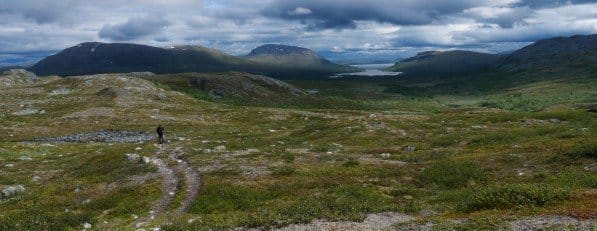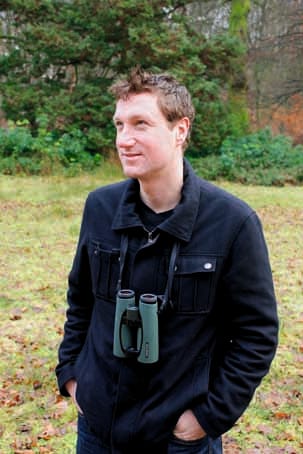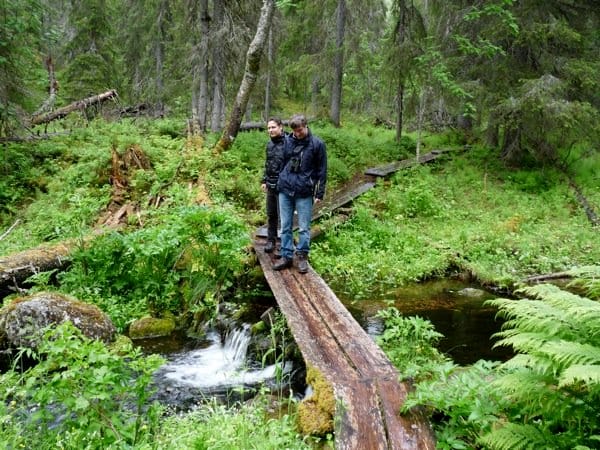Doing the book review of “The Crossbill Guide to Extremadura” really piqued my interest in the author and founder of the Crossbill Guides Foundation – I just loved the ethics and philosophy behind the foundation, and so I decided to contact the author and founder, Dirk Hilbers to see if he would mind opening up his mind and heart to us…
– what has been your favourite guide/project so far?
This is a question I am asked a lot, and I can’t answer it. Each area has its own specific charm and peculiarities and is in its own respect top-of-the-bill. I submerge myself into its characteristics and into its ‘feel’, before I start working on the guide – and for the time that I am working on an area, that area is my favourite. As for the books, that is a different matter. We started out as a team with enthusiasm and knowledge, but little experience in book-making. There is definitely a progression in the quality of the books if you compare the first titles (in particular the first two) with the ones that came out later.
– do you have another job besides the Crossbill Guides?
Yes I do. I do a range of projects, both under the flag of Crossbill Guides and otherwise. Broadly speaking, I work in the field of education and communication between nature conservation and other stakeholders. The guidebooks serve that purpose: communicating ecological values of natural areas to visitors. Besides that, I teach environmental ethics courses for biology students at the university and currently I am working also on an exciting project of producing a simulation game called ecosim (primarily an education tool for students) in which the player has to fulfil conservation tasks in an interactive ecosystem (e.g. reduce traffic casualties amongst Badgers, get the White-tailed Eagle back as a breeding bird, increase the number of protected plant species etc.). The project will take another year to complete, but in about a month from now, we should have the first samples finished on www.ecosim.nl.
– so far you have focussed on European nature. Any plans for further afield (USA, Asia, Africa)?
We started the series with the idea that too many people travel away from Europe thinking that there is no real nature left there. One of the objectives of the series is to show that this isn’t the case. Two more practical reason for the exclusion sofar of areas further afield is that the further you go the more difficult it is to obtain the information needed to produce a guidebook that upholds the current level of depth and quality, and another is that the further people travel, the larger area they want to cover – and our guidebooks are set up to cover regions rather than large countries. This has kept us to a West-palearctic range (so near east and north Africa are in principle within our range even though these areas haven’t yet been covered).
This being said, we are currently investigating options to team up with a group of American naturalists to produce a series of guidebooks on North American areas. Too early to tell though, whether this project will materialise any time soon.
– are there any particular people that have/do inspire you; that have helped you develop your ideas and vision?
With respect to the guidebooks – we work on those in a team and everyone in that team participates in the development of ideas. Without this open structure of developing ideas and projects, it wouldn’t work. Lapland – see the Crossbill Guide to Finnish Lapland and the Kuusamo area
Lapland – see the Crossbill Guide to Finnish Lapland and the Kuusamo area
– do you have a motto or leading principle by which you lead your life? Or which you would pass on to others?
I do not have a leading principle but now that you ask, I would have to say that my leading principle is to always look beyond any leading principle – to keep an open mind or, to use that popular management phrase – to think outside the box -. In my courses, this is the main objective: to understand one’s own frame of reference and value system, and that of other parties. In the Crossbill Guides it is no different. The books – next to being practical aides – explain why certain species or landscapes are more interesting than others from the perspective of nature conservation, inviting the reader to ‘look through the eyes of nature conservation’ and see what is so beautiful, valuable and worthy of preservation from that perspective. They don’t profess this to be the only right way of looking at an area, they merely want to hand a reference of valuing an area. Does this sound vague? Take these large savannah-like areas in Extremadura, Spain, for example (the Dehesas). They are actually the result of a unique form of land use, found almost nowhere else, which has a direct relation to the unique birdlife found there. Azure-winged Magpies you’ll find pretty much nowhere else but in this type of landscape, and other species, like Hoopoes and Woodchat Shrikes, occur in densities that are unique. The Crossbill Guides explain why this is. This different way of looking at a place, outside the existing reference, gives a whole different meaning to an area that has been little valued for centuries.
– how can people help support the Crossbill Guides Foundation?
Through donations of course, but also by helping out in the organisation or presenting new ideas. We are not an organisation with closed ranks (that would go against my motto) but open for fresh ideas that fit in our philosophy and objective. That is, as long as the idea comes with the intention to carry it out together.














At first I thought this post was going to deal with some field guide that revealed the mysteries of Crossbill identification but it was still an interesting interview!